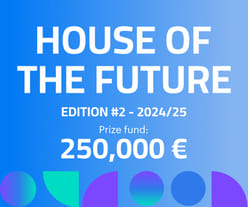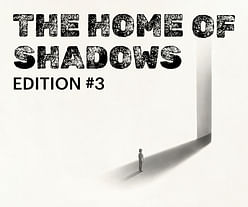
The Royal Institute of British Architects (RIBA) has announced the winners of this year's International Awards for Excellence.
22 projects, spread across 14 countries, have been recognized for showcasing architectural excellence through key themes, including: climate resilience and connection to nature, creative reinvention and extension of existing architecture, and space for wellness, mindfulness, and community through design.
All of the projects are now in the running for the fourth RIBA International Prize, which will be announced in November 2024.
Look below for the complete list of winners and project photos.
Modulus Matrix, a six-story courtyard building by Peris + Toral Arquitectes in Cornellà, Barcelona, features 85 flexible social housing units constructed with timber. Completed in 2016, the project uses a tatami mat module of 3.6 x 3.6m, fostering a strong community through its central courtyard and galleried access. The design emphasizes sustainability and adaptability, with private balconies and well-considered neighbor relationships. This project serves as a model for sustainable social housing in Barcelona.

Jingdezhen Pengjia Alley Compound by Beijing AN-DESIGN Architects exemplifies a sensitive and respectful approach to historic preservation in China. Retaining layers of history from the Ming/Qing dynasty to 1990s renovations, the project highlights the distinction between new and old wooden structures using ancient joinery techniques. This preservation effort not only restores but reimagines the building, serving as a model for sustainable urban revival and heritage conservation, ensuring its value for future generations.

Jacoby Studios by David Chipperfield Architects, located in Paderborn, Germany, exemplifies the innovative re-imagination and extension of existing buildings for a family business headquarters. The project carefully re-orders and adds to a historic monastic center, respecting its medieval context. By integrating new concrete and timber elements with the existing stone and brick walls, the architects create a harmonious balance between old and new, forming a cohesive and tranquil setting that complements its riverside location and historical significance.
Adega Pico Winery and Hotel by DRDH Architects and Sami Arquitectos, located in Portugal’s Azores, integrates seamlessly into a UNESCO World Heritage site. Built from local lava rocks, the structure features sculptural concrete beams visible from afar. The design harmonizes with the landscape’s vineyard terraces, reflecting the unique volcanic environment. The building’s courtyard recalls regional cloistered typologies, providing shelter and views of the Atlantic. The winery’s production processes are highlighted along circulation routes, making the industrial function an integral part of the visitor experience.

Six Bricolage Houses by ARCity Office in Nantou Ancient City, Shenzhen, China, revitalizes historic streets through innovative urban renewal. This project features six self-built houses, curated for micro-updates, blending modern design with rich local heritage. The architects preserved the existing social structure and spatial characteristics by integrating new functions into traditional “handshake buildings.” Enhancements include cantilevers, wall modifications, and increased natural light, improving living conditions while contributing to the public realm. This model showcases a joyful and sustainable approach to urban village renewal.
Neue Nationalgalerie Refurbishment by David Chipperfield Architects Berlin exemplifies sustainable conservation of 20th-century architecture. Originally completed by Mies van der Rohe in 1968, this International Style icon underwent a meticulous conservation-led refurbishment. The project preserved 35,000 building components, addressing functional flaws and integrating modern enhancements such as LED lighting and underfloor heating. The gallery’s infrastructure was updated while maintaining the original architectural integrity. Improvements include enhanced visitor facilities and expanded technical spaces, ensuring the long-term sustainability and functionality of this modernist masterpiece.

Jahad Metro Plaza by KA Architecture Studio transforms a rundown metro station entrance in Tehran into a vibrant local landmark and public space. By introducing brick-clad arches above the escalators, the project creates a triple-height arrival space with mini theatre seating, fostering social interaction. The arches, reminiscent of traditional Persian forms, enhance the neighborhood’s identity. Constructed with locally made bricks, the project is cost-effective and sustainable. This redesign not only improves transit infrastructure but also integrates informal social spaces, contributing to a broader public realm strategy for Tehran.

Jadgal Elementary School by DAAZ Office is a charitable and imaginative rebuild of a rural school in South-Eastern Iran. The circular walled site features naturally ventilated classrooms around a central playground, also serving as a communal space. The playful perimeter wall, with large circular openings, blends with the landscape and invites community interaction. Constructed with insulated concrete formwork to meet earthquake regulations, the design avoids columns and incorporates sustainable materials. The project, involving village participation, enhances social and environmental sustainability, promoting community engagement and women’s contributions through various initiatives.

Ahmedabad University Centre by Stephane Paumier Architects serves as a dynamic gateway between the university and the city. This student hub includes incubation spaces, student services, a food court, multipurpose areas for sports, performances, and cinema, with a rooftop running track and futsal court. The bold design features a tartan grid of served and servant spaces, enabling daylight penetration and cross ventilation. Built with an in-situ concrete frame and polychromatic brickwork, the LEED Platinum-certified building employs sustainable strategies such as water recycling and solar roofing, providing a vibrant and cool space for students throughout the day.

Veemgebouw Building by Caruso St John Architects transforms a 1943 industrial warehouse in Eindhoven into a vibrant mixed-use urban building. The ground floor features a food market, while the upper nine floors accommodate a 600-space car park, freeing public space from private cars. An elegant rooftop extension houses offices and energy-neutral flats, complemented by playful yellow accents and a central courtyard with green spaces. This project preserves the building’s industrial heritage while incorporating sustainable elements such as photovoltaics and communal heat-pumps, achieving a dramatic and successful transformation that enhances the Strijp S site.
Thapar University Learning Laboratory by McCulloch Mulvin Architects with Design Plus Associates, located in Punjab, India, features three prismatic towers clad in red Agra stone, housing a Science Building, a Library, and Lecture Theatres. These towers emerge through a 10-meter-high podium, creating a dramatic and austere setting. The ground-level podium provides shaded routes and gathering spaces, connecting the towers and the campus. The design uses robust local materials and construction techniques, responding to the harsh climate with architectural shading and natural ventilation. The project makes a bold architectural statement, emphasizing the importance of learning spaces.

Liknon by K-Studio, located on Samos island, seamlessly integrates with its terraced hillside setting. This single-story building, serving as a museum and vineyard, explores Metaxa’s heritage within a century-old vineyard. The project features restored terraces and a visitor center, harmoniously blending with the landscape. Using traditional stone-wall terracing and local materials, the design minimizes environmental impact and supports the local economy. Sunken courtyards and green roofs provide natural cooling, enhancing sustainability. The project celebrates the connection between Samos’ terroir and its muscat grape cultivation, offering visitors a rich cultural and sensory experience.

Bioclimatic School in Guécélard by Atelier Julien Boidot, completed in 2020, is a sustainable extension of the Rene Cassin School in north-western France. This 830m² single-story addition unifies the existing kindergarten and primary school with low-carbon materials like corrugated cement board, extruded tile bricks, timber trusses, and CLT. Notably, solar chimneys provide natural ventilation, reducing the building's carbon footprint. The design, inspired by local agricultural structures, improves the school's relationship to the street, creating a welcoming public space while maintaining a humble, utilitarian aesthetic with clay, wood, and cement board interiors.
Sharanam Centre for Rural Development by Jateen Lad in Tamil Nadu, India, exemplifies world-class innovation in design, sustainability, and quality. Built on a desolate site, the center features a multi-purpose hall, meeting spaces, offices, a newspaper studio, a community radio station, a kitchen, and an amphitheater, integrated with nature. Constructed with locally sourced materials and traditional Tamil building techniques, the project trained local workers, achieving zero waste. Its sustainable design includes evaporative cooling through interwoven ponds and self-supporting vaults. The center is recognized by the UN Environment Programme for its low energy and carbon footprint, setting a standard for future green community buildings.

Punchbowl Mosque by Angelo Candalepas and Associates is a profound sacred space in a Sydney residential suburb. The mosque features a remarkable sequence of concrete coffers forming mini-domes on two sides, with a circular opening revealing a timber dome above. The design leads worshippers through external courtyards and a rooflit ablution space to a simple, square interior reoriented towards the east. Built with low-carbon, high-fly ash concrete, the structure ensures thermal stability without mechanical air conditioning. The mosque serves both religious and community functions, embodying modern material use while honoring Muslim architectural traditions.

Morland Mixité Capitale by David Chipperfield Architects Berlin and CALQ transforms the former Préfecture de Paris on Boulevard Morland into a vibrant mixed-use urban quarter. Part of the “Reinventer Paris” initiative, the project revitalizes the 1964 administrative tower and two nine-story wings, integrating housing, retail, cultural spaces, a hotel, youth hostel, offices, and more. Two new buildings create a public passage from the boulevard to the Seine. The redevelopment retains significant existing structures, enhancing environmental sustainability. Strategic layering of functions and new small-scale details, like balconies and large windows, blend seamlessly with the preserved facades, promoting urban continuity and biodiversity.
Green Field Factory of Karupannya Rangpur Limited by Nakshabid Architects is an exemplary rug-making factory that harmonizes with its natural environment to enhance employee wellbeing. The building, enveloped in lush planting, provides shade and natural ventilation. Gardens and courtyards on the parkland roof and surrounding areas create tranquil spaces for relaxation and social interaction. Interior water pools cool the air, filtered through green screens and drawn upward by stack effect. Additional facilities include a medical center, grocery shop, daycare, prayer room, and canteen. The factory's design, featuring textured masonry walls and PV solar panels, has earned LEED Platinum certification, promoting women's empowerment and community engagement.
Engineering Laboratories at Pontificia Universidad Javeriana by Juan Pablo Ortiz Arquitectos + TALLER Architects integrates seamlessly with the Andes foothills in Bogota, Colombia. The complex merges a retrofit of an 80s brick structure with a new steel-framed tower, emphasizing sustainability and technical innovation. A public atrium bridges old and new, featuring vertical gardens, bleacher seating, and a rooftop garden, fostering wellbeing and collaboration. The 15-story tower, marked by a brass-colored façade and open crown, optimizes natural light and passive cooling. The central atrium enhances social interaction, acoustics, and air quality, embodying the integrity and innovation of the university's engineering faculty.

College Hampate Ba by Article 25 in Niamey, Niger, is a low-carbon, passively ventilated secondary school serving low-income families. The project transforms an existing middle school by refurbishing old buildings and adding new naturally ventilated teaching, latrines, and administration blocks. Designed to minimize solar heat and maximize passive cooling, the layout features lightweight metal roofs and masonry walls made from locally sourced laterite. The school's design reduces internal temperatures by 7-8 degrees, promoting a comfortable learning environment. This project also emphasizes local skills and sustainable construction techniques, aiming to inspire students and contribute positively to the community.

Casa Catarina by Taller Hector Barroso is a single-family dwelling in Valle de Bravo, Mexico, seamlessly integrating with its natural surroundings. The design skillfully negotiates the rugged terrain, creating a series of overlapping indoor and outdoor spaces that embrace the landscape and views. The house features stone and rammed earth walls, timber-beamed ceilings, and volcanic rock floors, blending sustainably with the environment. Arranged around central social spaces, the bedroom blocks ascend the slope in diagonal sequences, providing dynamic spatial experiences. The master suite, with an additional level, enhances the house's connection to its context, making it a refined and engaging architectural piece.

Bundanon Art Museum by Kerstin Thompson Architects, located by the Shoalhaven River south of Sydney, connects an art museum and a guest house. The museum, partly subterranean, houses the collection of Australian painter Arthur Boyd. A 160-meter steel bridge with 32 guest rooms and a café connects to the museum. The guest house, inspired by historical trestle bridges, features dark-painted steel, wooden cladding, and a complex facade. The museum has exposed-concrete facades and ribbed concrete roofs. The complex employs advanced climate control with passive elements and renewable energy systems, achieving a zero-energy standard.

Shah Muhammad Mohsin Khan Mausoleum by Sthapotik, located in Dhaka, Bangladesh, is a contemplative, light-filled structure built to honor the client's father and serve the local community. The mausoleum features jali wall brickwork that allows dappled light to dance across its curved surfaces. The design, inspired by multi-domed mosques of the Sultani period, includes a cylindrical concrete turreted ceiling and skylights. Situated near the site entrance, the single-material construction with locally made red brick creates a serene atmosphere. Future site developments include a mosque, library, and family home, enhancing the community's gathering space.

250,000 € Prize / HOUSE OF THE FUTURE 2024/25
Register by Wed, Apr 30, 2025
Submit by Mon, Jun 2, 2025

The Architect's Chair / Edition #3
Register by Wed, Jan 15, 2025
Submit by Tue, Feb 18, 2025

The Home of Shadows / Edition #3
Register by Wed, Jan 29, 2025
Submit by Mon, Mar 3, 2025

The Last Nuclear Bomb Memorial / Edition #5
Register by Thu, Jan 16, 2025
Submit by Wed, Feb 19, 2025
No Comments